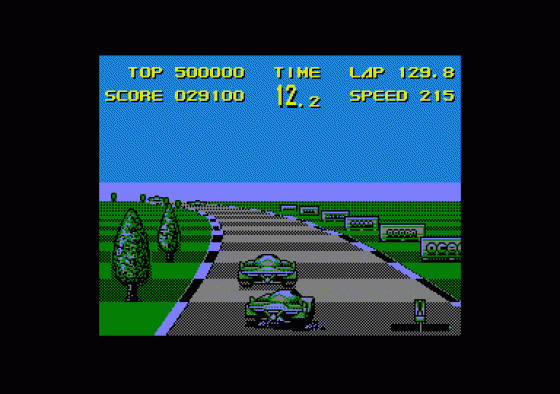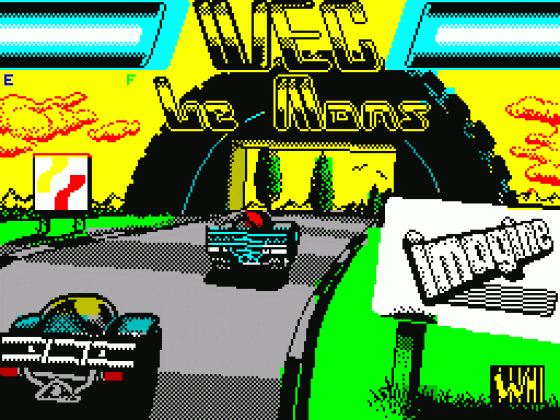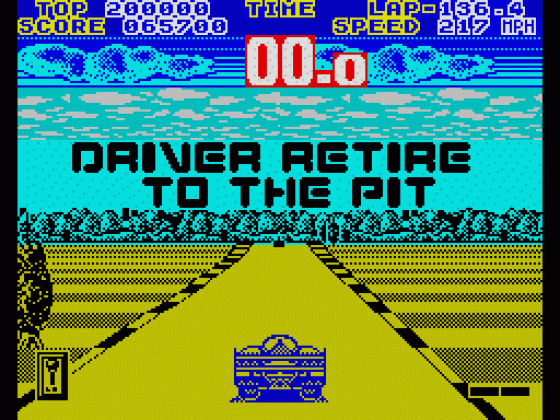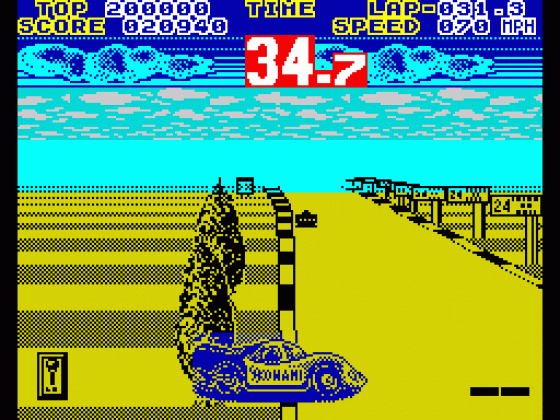
C&VG
 1st March 1989
1st March 1989
Categories: Review: Software
Publisher: Imagine
Machine: Spectrum 48K
Published in Computer & Video Games #89
Wec Le Mans
The summer of 1987 brought something of a revival for driving games in British arcades. The most popular of them all was the immensely successful OutRun, and following close behind was Wec Le Mans, with its unusual rotating cockpit giving new meaning to the term "going for a spin".
Unsurprisingly for a game called Wec Le Mans, you, the hapless player, are strapped in a car on the starting grid of the 24-hour Le Mans road race. Your auto is ably kitted out with an accelerator (always handy if you want to go *really* fast), a brake (always handy if you're already going *really* fast), a speedometer (so you know whether or not you're going *really* fast), and low and high gear shift (to get you from fast to *really* fast and back again).
Controlling the game via joystick or keyboard is very satisfactory, because the longer you hold the steering, the greater the lock put on the steering wheel, as a gauge at the bottom of the screen shows.
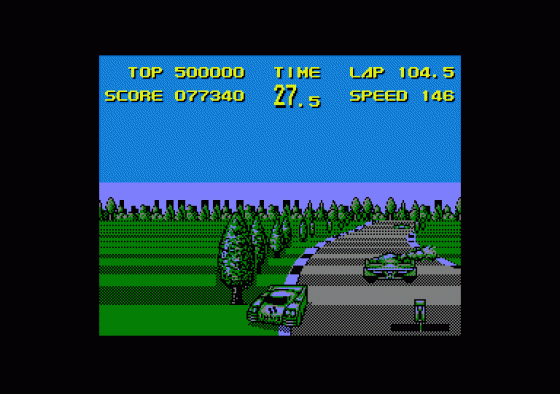
The track runs between three checkpoints, and you have to beat the clock to the next one or retire to the pits in disgrace. Seeking to foil your speedy ambitions are a host of other cars which dodge and weave across the track, crashing into one another, bursting into flames and generally making the going difficult for safe drivers like you.
To make a twisty, turny, bumpy track even more dangerous, signboards, lamp posts and other trackside obstacles lie in wait for the reckless driver, who tries to skid his way through corners at top speed, instead of braking. Unfortunately, breaking is exactly what you car does after a crash has hurled it twenty feet into the air and fifty yards down the track - a sure-fire way to lose time and the race. As the race progresses the track becomes more and more crowded with backmarkers, who like nothing better than crashing into each other and taking you with them as they career off the road.
And that's it really, just what you'd expect from a motor-racing simulation, oh, except to say that this one is really good. The track graphics are a teensy bit jerky, but the 3D effect they create is fast, and convincing enough, and the car sprites follow the dips and curves in the road perfectly. Apart from the bouncy tunes and jingles the game sounds are limited to the tinny buzz of the engine, which grows irritating as the race goes on, but serves its purpose of indicating when to change up a gear.

Gameplay is as fast as you could hope, and challenging too. After a day's concerted effort I was on the brink of getting onto the third lap, but after that the number of the cars on the track and the incredibly tight time limit proved impossible to beat.
Being unable to beat the game is no reason for me to bear it a grudge, though. Indeed, this is one of the most elegant race games I've seen on any computer lately, and it's certainly the best I've played on the Amstrad.
The Spectrum version is of similar high quality and the game doesn't seem to lack anything in spite of the machine's graphical and audio shortcomings. Strange, isn't it, how well driving games translate to the old Speccy?
On these two machines at least, this has to be one of the best arcade conversions going. Test drive it today.
Other Reviews Of Wec Le Mans For The Spectrum 48K
W.E.C. Le Mans (Imagine)
A review by Mark Caswell (Crash)
WEC Le Mans (Imagine)
A review
Wec Le Mans (Imagine)
A review
Scores
Amstrad CPC464/664/6128 Version| Graphics | 82% |
| Sound | 68% |
| Playability | 84% |
| Value For Money | 80% |
| Overall | 82% |
Scores
Spectrum 48K Version| Graphics | 88% |
| Sound | 81% |
| Playability | 85% |
| Value For Money | 80% |
| Overall | 83% |



